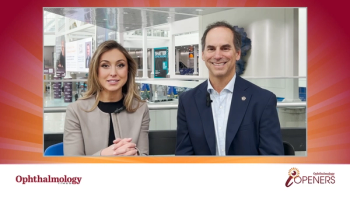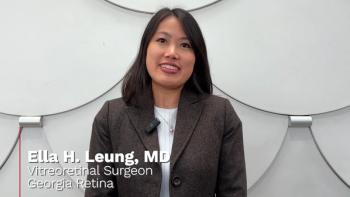
Increasing demands mean doctors must advocate for change
Falls Church, VA-Ophthalmologists can justifiably feel as if they are on an endless treadmill, because forces such as personnel shortages and reimbursement cuts are forcing them to become "more gerbil-like every year," according to William L. Rich III, MD, FACS, secretary for federal affairs, American Academy of Ophthalmology, Falls Church, VA. The way out of this bind involves several strategies, from advocating changes in federal reimbursement policy to improving practice productivity, he said.
"The increase in demand during the last decade in the face of a stable workforce and a stable supply pipeline has lead to a relative shortage of ophthalmic personnel," Dr. Rich said.
Although there has been a 15% increase in the number of trained ophthalmologists over the past decade, the physician workforce is still insufficient to meet demand, he added, explaining that the number of ophthalmologists per 100,000 population has fallen, especially among patients over age 65. In 1998, there were 36.7 ophthalmologists per 100,000 population; in 2004, the number had dropped to 35.8.
The staffing shortage is likely to continue, given an expected doubling of Medicare beneficiaries by 2040 and a projected 40% increase in demand for ophthalmic surgery in 2015. To illustrate the shape of the future, Dr. Rich pointed out that the number of Medicare beneficiaries increased 7% between 1991 and 1998, but the incidence of visits for retinal disease and glaucoma-related diagnoses increased by 24%. Any growth realized in the number of trained ophthalmologists is likely to be less than the rate of the past decade and insufficient to keep up with the skyrocketing demand, he added.
The biggest driver of health-care costs and services is new technology, which will cause an increase in demand for services but will not necessarily lead to a decrease in staffing needs, Dr. Rich said.
Indicators of the personnel shortage abound, including a market share loss of office visits and diagnostic services to optometry over the past decade, a practice pattern indicative of a mature workforce, a marked increase in productivity, and no compulsion to fill the demand for services in locations such as Veterans Administration facilities, emergency rooms, and shortage areas, Dr. Rich continued.
Loss of market share is evident from factors such as a decrease in ophthalmology's capture of new Medicare patients from 75% in 1995 to 65% in 2002, a drop of 300,000 visits a year. The ophthalmic share of established patient visits has also decreased from 85% to 78%, a loss of 1.3 million visits per year.
The signs of a mature workforce include greater use of technicians, paraprofessionals such as optometrists, and increased delegation and collaboration reflected in the growth of co-management, Dr. Rich said.
Another issue that keeps physicians on the figurative treadmill is reimbursement cuts. Medicare reimbursement has not kept pace with inflation over the past decade, and when this happens, practices can remain viable only by decreasing overhead or increasing productivity, he said. However, clinical labor represents not only the largest percentage of practice costs but also the greatest driver of increased productivity.
Productivity generally increases in response to either decreasing revenues or increasing demand, and ophthalmic revenues have consistently increased despite cuts in sentinel surgical codes. There has been a marked increase in reimbursement for diagnostic testing and office-based procedures, while reimbursement has been cut for major surgical procedures done outside the office.
If increased productivity is the solution, possible ways to achieve it include working longer hours, spending less time per service, using more technology, making greater use of technicians and optometrists, forming larger groups with shared services, and improving your response to changing stimuli, such as reimbursement, Dr. Rich said.
Newsletter
Don’t miss out—get Ophthalmology Times updates on the latest clinical advancements and expert interviews, straight to your inbox.













































